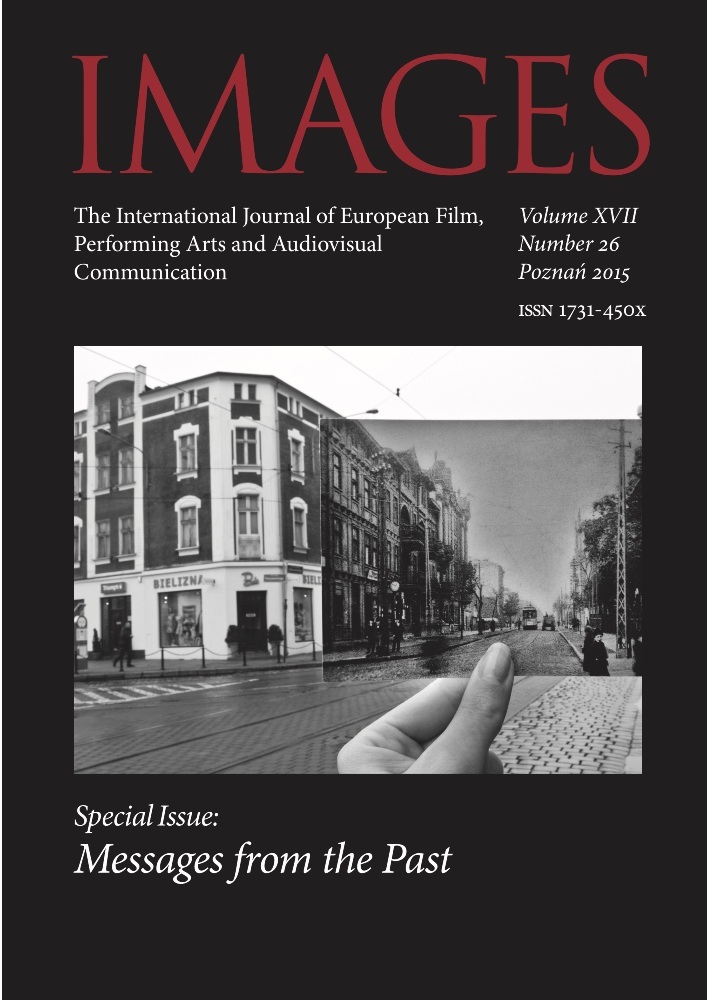Abstrakt
Collective Memory and Colloquial Aesthetic Experience. Remarks on the Functions of Digitalized Paintings in Second Life
The article addresses the representation of art in Second Life. There is an interesting dichotomy between collective memory and colloquial aesthetic experience in virtual reality. The article consists of two main parts: the first pertains to decontextualisation as a paradigm in art; the second refers to the features of daily aesthetic experience. The main hypothesis of this paper is: digitalized images of paintings reveal changes in thinking about art in a world dominated by new media (and thus also by Second Life). This hypothesis confi rms the presumption that collective memory nowadays is dominated by colloquial thinking about art, aesthetic and beauty.
Bibliografia
http://maps.secondlife.com/secondlife/Leelight/79/105/621. Second Life was created by Linden Research, Inc. in 2003. Compare with: www.lindenlab.com/about.
G. Kress, T. van Leeuwen, Multimodal Discourse. The Modes and Media of Contemporary Communication, National Council of Teachers of English, London 2001, p. 5.
http://world.secondlife.com/place/ec5f411b-9535-e896-1713ced233a8080e
L. Manovich, Język nowych mediów, trans. P. Cypryański, WPiA, Warszawa 2006, p. 124.
P. Lévy, Cyberculture, trans. R. Bononno, University of Minnesota Press, Minneapolis 2001, p. 125.
H. Belting, Antropologia obrazu. Szkice do nauki o obrazie, trans. M. Bryl, Universitas, Kraków 2007, p. 86.
Ch. Gere, Digital Culture, Reaktion Books, London 2008, p. 101.
G. Kress, T. van Leeuwen, op. cit., p. 7.
G. Genette, Palimpsests: Literature in the Second Degree, University of Nebraska Press, Nebraska 1997, p. 1. A. Huyssen, Present Pasts: Urban Palimpsests and the Politics of Memory, Stanford University Press, Stanford 2003, p. 3.
http://maps.secondlife.com/secondlife/Leelight/79/105/621: TOC Art. Gallery, Main Galleries, Classical Paintings, Leelight.
http://world.secondlife.com/place/ec5f411b-9535-e896-1713-ced233a8080e
G. Kress, T. van Leeuwen, Reading Images. The Grammar of Visual Design, Routledge, London 2006, p. 118.
J. Ludwiński, “Sztuka w epoce postartystycznej”, [in:] Refleksja konceptualna w sztuce polskiej. Doświadczenia dyskursu: 1965–1975, ed. P. Polit, P. Woźniakiewicz, CSW Zamek Ujazdowski, Warszawa 2000, pp. 106–118. Quoted by: E. Wójtowicz, “W stronę antymaterii. Sztuka Internetu wobec refleksji teoretycznej”, [in:] Perspektywy badań nad kulturą, ed. R.W. Kluszczyński, A. Zeidler-Janiszewska, Wydawnictwo UŁ, Łódź 2008, p. 201.
http://maps.secondlife.com/secondlife/Moya/135/128/23
P. Virilio, “Maszyna widzenia”, [in:] Widzieć, myśleć, być. Technologie mediów, ed. A. Gwóźdź, Universitas, Kraków 2001, p. 45.
C. Geertz, Wiedza lokalna. Dalsze eseje z zakresu antropologii interpretatywnej, trans. D. Wolska, Wydawnictwo UJ, Kraków 2005, p. 84.
Z. Kloch, Odmiany dyskursu. Semiotyka życia publicznego w Polsce po 1989 roku, Wydawnictwo UWr, Wrocław 2006, p. 15.
R. Sulima, Antropologia codzienności, Wydawnictwo UJ, Kraków 2000, p. 4.
R. Bubner, Doświadczenie estetyczne, trans. K. Krzemieniowa, Oficyna Naukowa, Warszawa 2005, pp. 178–179.
M. Hendrykowski, Semiotyka ruchomych obrazów, Wydawnictwo Naukowe UAM, Poznań 2014, pp. 216–231.
M. Kaźmierczak, Auschwitz w internecie. Przedstawienia Holokaustu w kulturze popularnej, Wydawnictwo Naukowe UAM, Poznań 2012.
P. Levinson, Nowe nowe media, trans. M. Zawadzka, Wydawnictwo WAM, Kraków 2010, pp. 222–227.
S. Cubitt, Digital Aesthetics, SAGE Publications, London 1998, pp. 116–122.
M. Augé, Formy zapomnienia, trans. A. Turczyn, Universitas, Kraków 2009; M. Augé, Nie-miejsca. Wprowadzenie do antropologii hipernowoczesności, trans. R. Chymkowski, intro. W.J. Burszta, Wydawnictwo Naukowe PWN, Warszawa 2010.
Licencja
Copyright
© 2015 Uniwersytet im. Adama Mickiewicza w Poznaniu
OPEN ACCESS
